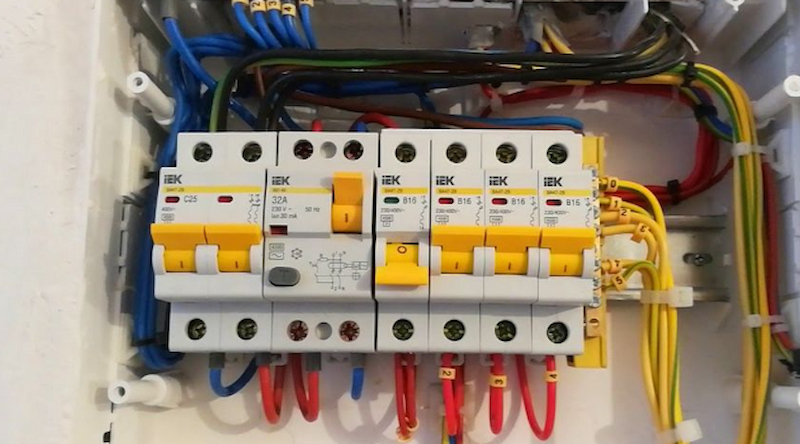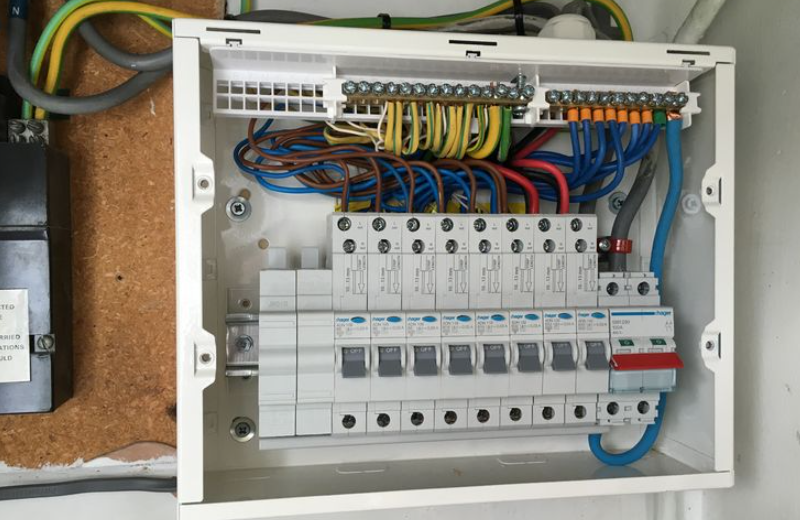Residual current devices, also known as residual current circuit breakers, are essential protective devices used in electrical systems that quickly disconnect electricity in the event of irregularities. A residual current device (RCD) that comes with overcurrent protection is known as an RCBO circuit breaker, or residual current circuit breaker with overcurrent protection. The key functions of RCBOs are to provide protection against overload, earth fault currents, as well as short circuit currents.
RCBOs should be attached to each individual circuit to ensure that a fault in one circuit won’t affect the operation of others. These devices allow for the disconnection of the circuit, and thus, the protection of equipment and people in case of irregularities. They can be used independently of other overcurrent protective devices within the rated short-circuit capacity.
The design and testing requirements for an RCBO circuit breaker are standardised in the IEC/EN 61009 standard, which relates to residual current circuit breakers with integral overload protection for households and similar uses.
Residual Current Circuit Breakers (RCDs)

The purpose of residual circuit breakers is to disconnect the flow of electricity in order to avoid serious and sustained electrical shocks. Still, there’s a chance of the person falling over after the initial shock. The breaker is responsible for the fast and automatic disconnection of the circuit upon detecting irregularities in the current between the supply and conductors. RCDs are an essential part of the automatic disconnection supply (ADS). These devices must operate as quickly as 25-40 milliseconds of the detection of the leaked current, in excess of 30mA. However, it’s worth noting that this is only true for final circuits with less than 32Amps.
Residual Current Breaker With Over-Current (RCBOs)

As aforementioned, RCBOs ensure protection against two types of electrical faults: residual or earth leakage, which happens when there’s a break in the circuit, which happens as a result of DIY accidents or wiring errors. If the supply of electricity isn’t immediately broken, the person in contact can experience a fatal electric shock; and overcurrent, which can be a result of either short circuits or overloads. In case of overloads, the circuit is overloaded with too many devices, so the transfer of power exceeds capable capacity, whereas in the case of short circuits, the circuit resistance may be insufficient and there might be a high-level multiplication of the amperage. Short circuits are considered significant risks.
RCD vs RCBO

RCDs are designed to protect against electrocution or electrical fires by cutting off the power supply whenever current leakage is detected. They accomplish this by continuously monitoring the current levels going through a wire in both directions. The circuit is automatically broken in case there’s a difference of 300mA or less. That being said, they don’t protect against overloads and short circuits. They feature a standard rating that can be anywhere between 32A to 64A. This rating, however, corresponds with the switching mechanism and internal contact. The devices won’t trip if the standard rating is exceeded. You may notice an indication of imbalance that needs to happen for the device to trip.
All RCDs feature a test button that allows for the simulation of events that involve disparity in the electrical supply. If the device doesn’t trip during the test, it must be replaced.
There are a few important differences between RCDs and RCBOs. RCBOs have an in-built electronic switch and are specifically designed for the transfer and breakage of current even under normal service conditions when the residual current is of a specific level under the defined conditions. That being said, RCBOs break the circuit even if the current demands exceed a specific level. Overloads may be sensed in case of a short circuit or excessive demand as a result of connecting too many devices. These things will cause RCBOs to trip and break the circuit when there would otherwise be a significant risk of the wires melting and catching fire.
Fitting RCBOs
Before you even think about installing an RCBO, you have to make sure it provides at least 10mA protection, features a 25A current rating, offers A-type protection and is SRIM certified. You’ll also need access to both live and neutral wiring. A screwdriver is also needed to securely attach the RCBO. Use a test pen to make sure the power is off after disconnecting it from the mains supply. Furthermore, ensure the right connection for the wiring to make sure the RCBO operates properly. The cabling must be attached to the right terminal and tightened using the screwdriver.
Next, connect the earth wire from the RCBo to the bar and tighten it with the screwdriver. Go on with switching the power of the RCBO and the connected device. You can check the installation by flicking the test button to make sure the connection trips. The terminal might also need to be reconnected in some cases.

